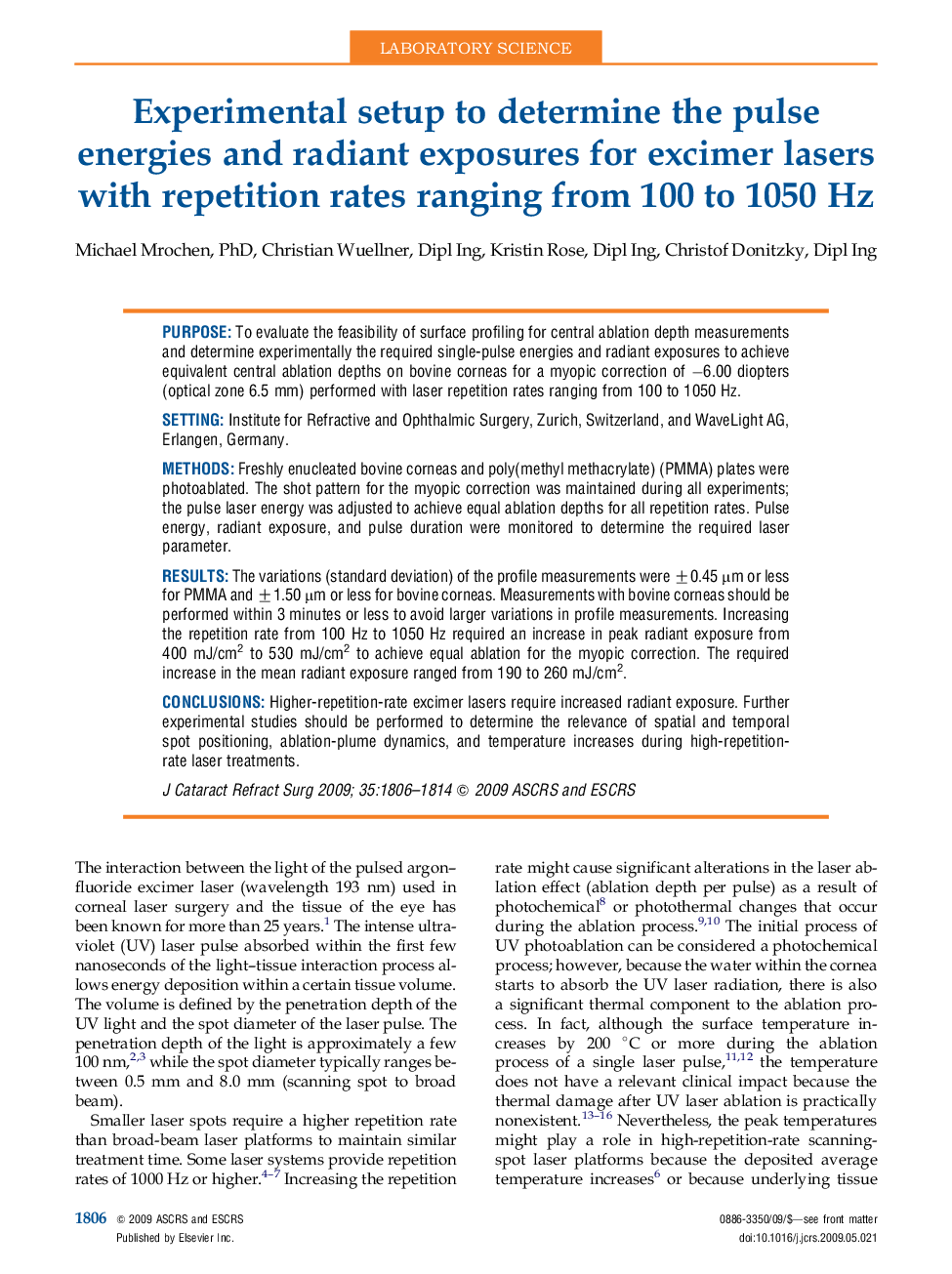| کد مقاله | کد نشریه | سال انتشار | مقاله انگلیسی | نسخه تمام متن |
|---|---|---|---|---|
| 4021173 | 1262052 | 2009 | 9 صفحه PDF | دانلود رایگان |

PurposeTo evaluate the feasibility of surface profiling for central ablation depth measurements and determine experimentally the required single-pulse energies and radiant exposures to achieve equivalent central ablation depths on bovine corneas for a myopic correction of −6.00 diopters (optical zone 6.5 mm) performed with laser repetition rates ranging from 100 to 1050 Hz.SettingInstitute for Refractive and Ophthalmic Surgery, Zurich, Switzerland, and WaveLight AG, Erlangen, Germany.MethodsFreshly enucleated bovine corneas and poly(methyl methacrylate) (PMMA) plates were photoablated. The shot pattern for the myopic correction was maintained during all experiments; the pulse laser energy was adjusted to achieve equal ablation depths for all repetition rates. Pulse energy, radiant exposure, and pulse duration were monitored to determine the required laser parameter.ResultsThe variations (standard deviation) of the profile measurements were ±0.45 μm or less for PMMA and ±1.50 μm or less for bovine corneas. Measurements with bovine corneas should be performed within 3 minutes or less to avoid larger variations in profile measurements. Increasing the repetition rate from 100 Hz to 1050 Hz required an increase in peak radiant exposure from 400 mJ/cm2 to 530 mJ/cm2 to achieve equal ablation for the myopic correction. The required increase in the mean radiant exposure ranged from 190 to 260 mJ/cm2.ConclusionsHigher-repetition-rate excimer lasers require increased radiant exposure. Further experimental studies should be performed to determine the relevance of spatial and temporal spot positioning, ablation-plume dynamics, and temperature increases during high-repetition-rate laser treatments.
Journal: Journal of Cataract & Refractive Surgery - Volume 35, Issue 10, October 2009, Pages 1806–1814